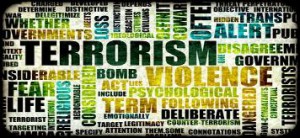
Abstract: The attack of September 11, 2001 has changed the approach to the concepts of terrorism and organized crime. Terrorism and organized crime are daily threats to international security and, therefore, it was seriously necessary to study the links between these two phenomena. By their nature, especially the objectives sought and the effects generated in society, activities in the field of organized crime and terrorism are placed, obviously, among offenses.
Keywords: terrorism, the phenomenon of cross-border crime, criminal network, fight against organized crime, border police, international police cooperation.
A definition of organized crime was formulated and presented at the UN Convention against Transnational Organized Crime, adopted on November 15, 2000, ratified by Romania by Law no. 565/2002, as follows: organized crime stands for the activities of any group of at least three people who allow those in power to enrich or control territories or domestic or foreign markets by using violence, intimidation, corruption, seeking either to pursue criminal activity or to infiltrate the legal economy.
Criminality evolves and its trends are influenced by changes affecting societies, both in time and space. This is a logical consequence because criminality is an inevitable byproduct of any society. To find the causes of increasing international crime rate is therefore necessary to consider the changes that have occurred worldwide over the last decades, especially in Europe. We might mention, as an example, demographic imbalance, economic and monetary uncertainty, distortions of rich and poor nations.
Organized crime and terrorism have been considered completely distinct phenomena before the day of September 11, 2001, known as America’s Black Tuesday. Committees of security studies, military and law enforcement structures approached topics of terrorism and organized crime at the strategic level. But often, these issues were addressed separately. In many debates, the growing threat of terrorism and transnational crime has been emphasized, but rarely have the links between them been highlighted. Closer analysis of the main elements did not regard the essence, as the purpose, forms, distinctions, but also complementary aspects that are highlighted for better understanding and, especially, for a more efficient counteraction.
Common issues, in phenomenology, of crime and terrorism derive mainly from their common general characteristics: subversion, dissimulation and transnational character. Differences between the two phenomena, as they occur in society, are observed in origin, motivational essence and purpose of their representatives.
The main difference between terrorism and organized crime comes from the difference between weakness and / or convictions (given mainly by human nature and culture) around which ideologies or de facto behavior of each of the two phenomena representatives emerge. The common features, but also differences and complementary aspects related to terrorism and organized crime may be, however, more easily identified and evaluated, in terms of the main parameters that characterize their full manifestation in society and its normal status.
Complementary aspects of the two phenomena are, in particular, in the field of circumscribed activities of their common membership in the category of offenses / crimes against local and / or international legal standards. Regarding the origin and motivation of organized crime the prevalent desire is to achieve a material – financial win at any cost. On the other hand, terrorism is especially based on the feeling of intolerance and contempt of the individual / group to everything that is not part of its own ideology and especially to what is perceived as a threat to its current situation or aspirations, as they are outlined in the group culture.
Organized crime, at its upper structures, requires activities that can be viewed as mostly peaceful by the ordinary observer, including office work (eg white- collar case, from the sphere of economic and financial crime, for the violence to be usually felt in the lower structures of the phenomenon; revenge actions; competition to fill market segments; illegal activity, etc.).
Regarding the objectives, terrorism aimed mainly political-ideological or political- administrative goals, including the political- administrative takeover of states or establishing new state entities. As regards the specific actions, terrorism, by its specificity, requires (at least in the execution part) activities that can only be classified as violent and usually have serious implications in themanagement structures of society and also in the public safety feeling.
Circumscribed activities of organized crime aim for objectives with serious connotations in financial economic area. Such targets may also consist of taking control of some industries from the economic field or with great relevance to this line.
Cross-border criminality has an international character which means that a criminal group acts in several countries, and a transnational character which refers to cooperation between criminal groups of different nationalities to control certain markets. The fundamental purpose of organized crime structures is continuous capitalization, meaning the accumulation of resources by illegal means, targeting traditional areas (drug trafficking, smuggling and tax evasion) and also new areas (terrorism, arms trafficking, human trafficking, immigrants trafficking).
Transnational organized crime primarily aims for profit. To effectively prevent and combat such crime, efforts should focus on detection, freezing, seizing and confiscation of crime related products. However, these operations are difficult to be achieved, due to differences between Member States laws in this field[2]. Opening borders, loosening border controls and legal vacuum are factors that create favorable conditions to increase the crime rate.
Regarding the means of extremist- terrorist activities, these are means, par excellence, with a specific character, even in that they can not be regarded as peaceful (especially in the executive component of those activities). For these reasons, they can not be easily hidden / concealed among means related to activity taking place currently in a given environment (officially or unofficially) endorsed by representatives of the phenomenon. Means that are used in organized crime activity are, with some exceptions, those currently in use in the particular environment or field.
In terms of the organizational framework, terrorism evolves, but especially acts, in a hidden organizational framework. This fact is a consequence of the nature of the objectives pursued by the representatives of the phenomenon and of the brutal methods of action that terrorist activities involve. Organized crime acts mainly in a framework that can be considered transparent, but this phenomenon’s circumscribed activities, are included, in a discreet manner, in illicit buildings / conceptual plans and execution, usually hidden.
With regard to staff training in terrorist structures, it is, par excellence, a specific training, such as to enable achieving its objectives in a hidden manner. The means that are used (including the situation in which the phenomenon is transnational) also have to be hidden.
The representatives of terrorism receive special training, including the possibility of development in an environment full of activities to enable them to study a particular situation undercover and to act successfully, according to the aimed objective. Members of organized crime structures usually have a joint training with other components of the operating teams. This training is completed, however, by matters regarding their willingness to act in bad faith and their disloyalty on the formal structure, institution or state within they act.
Regarding the infiltration or imposing process of own personnel by terrorist groups, it is a difficult task because it implies previously creating specific activities. Although not a rule, if the situation requires, in order to achieve the intended objectives, terrorists can (and even manage to) gain access, through legal channels in different target structures (providing the chance to provide information in the field or to organize and trigger a terrorist action of great impact). By force of circumstances (especially because of culture and group psychology), in general, personnelof groups with activity in the terrorist area does not have the training and skills that allow easy and unnoticed access to such structures. The infiltration or imposing their own staff within objectives in organized crime, is far easier than the same action done by terrorist groups. It is possible that access to these objectives, both directly, through official channels (with respect and even exceeding the minimum standards of training required) and by using intervention / influence from other representatives of the phenomenon, to be gained from positions that allow this.
Terrorist activities are, generally, outside groups that practice, depending on the interests they serve. We find, therefore, subsidization by some states of terrorist activities directed against other states, or against segments of their populations (state terrorism), or by donations and grants, in various forms, from groups or organizations sharing the same ideology or the same goals (especially political-ideological or political- administrative).
An important financing source of terrorism represents, however, practised organized crime, typically by groups of persons of the same ethnic composition of those financed terrorist groups. In general, the activities related to organized crime are self-financed. Sometimes, they become the source of funding for other illegal activities (including extremist-terrorist) or even for some state budgets (the case of so- called tax havens).
In order to operate and develop, it is necessary that a terrorist organization receives (or provides) financial support. This can be provided by individuals, states (states, governmental and non-governmental organizations, political parties, etc.), regional or global, and may take forms such as: budgets of states supporting terrorism; indirect funds allocated under the cover of assistance and international aid, support to democratic, progressive forces; businessmen or immigrants grants; funds collected by the parties, religious organizations, NGOs, individuals, etc., money obtained by traffickers of arms, ammunition , drugs, radioactive substances, strategic materials, human beings, works of art, fraud, tax evasion, fraudulent bankruptcy, embezzlement, forgery and money laundering, etc.; raise funds by taking hostages, threats, blackmail, burglary banks, attacking means carrying money or valuables.
Most countries affected by the phenomenon of organized crime have adopted and completed national legislation. They have complained about criminal activities of international origin: illicit drugs, smuggling of works of art and other national and world heritage values, illicit trade with firearms, ammunition and explosives, fund extortion, sale of stolen goods, frauds and currency or other valuables counterfeiting, kidnapping people to obtain financial benefit, false accounting and various other forms of financial fraud, pimping and prostitution, illegal gambling games etc..
Events in the last decade and technological progress allowed organized crime to exploit, at the right time, all the possibilities offered by geopolitical exchanges that took place in Central and Eastern Europe. Relations between police and government institutions highlight the following: organized crime is borderless; crime, similar to people, goods, capital and information flows ever more freely and without constraints; organized crime has taken a new size and shape, representing a threat to collective security and democracy; crime is closely linked to urban centers, ports and economic and political strategic zones; organized crime exploits all national and regional conflicts (in the former Yugoslavia, Ireland, the Balkans, Corsica, Kurdistan or among former Soviet republics).
Due to the complexity and speed evolution of the global phenomenon of cross- border crime, there are always new forms of manifestation, and the networks involved in illegal activities are organized increasingly better, some of which having military-type structure with specialized information services, resources and even experts in weapons of mass destruction.
Cross-border criminality is a serious threat to internal security of the European Union and its Member States. Since the adoption of the Millennium Strategy against crime in 2000, the European Union and its Member States have established principles, have enacted laws and set up police cooperation to combat cross-border crime.
Organized crime is a dynamic phenomenon. By changing the action domain and modes of operation, organized crime groups have the power to adapt to economic and social changes and the measures imposed by law enforcement authorities. The Stockholm Programme prioritized the importance of protecting European citizens against real threats of organized crime. Internal Security Strategy adopted by the European Council in March 2010 and the recent Communications of the Council on this strategy deals with organized crime as a phenomenon that manifests itself in different ways. Less serious acts such as trafficking in stolen vehicles and smuggling of counterfeit goods are manifestations of organized crime in the local organizations.
Economic recession equally affects EU citizens and groups specializing in cross- border crime. Organized crime tends to hit the legal economic activities and may affect good functioning of public administration and judiciary system, which is the worst trend of evolution of the phenomenon.
Given all this, organized crime groups have become more inventive in finding new routes, adopting new operating procedures and involving in new areas. Online betting and manipulation of sport events have become new targets for international organized crime groups.
Fight against organized crime requires well-developed policing and police cooperation. It is difficult to supervise the criminality because, as with any illegal act, one can only see the surface of the phenomenon. Criminologists are interested in various statistics on crime, despite many existing objections that the official statistics can not provide a valid idea of the reality of crime[3].There are different ways of doing a census of crime levels in general. On the other hand, there are very few specific cross-border crime statistics, because each state classifies its crimes under national law. According to organized crime threat assessment in the European Union – OCTA, criminal networks are divided on certain areas which sometimes overlap. Analysis of available data confirms the existence of five criminal networks with great influence on the dynamics of crime market in the EU.
The geographical center of the northwest criminal network is in the Netherlands and Belgium. Her role is the distribution of heroin, cocaine, synthetic drugs and cannabis. Its influence extends into United Kingdom, Ireland, France, Spain, Germany, Baltic countries and Scandinavia. Illegal crossings can be traced from east to west (women for sexual exploitation, illegal immigration, cigarettes, counterfeit goods, synthetic drugs) and vice versa (cocaine and cannabis).
Southeast criminal network is based on its geographic location between Asia and Europe and the important role of EU output. In terms of logistics, the importance of the Black Sea defines the network and creates opportunities for trade and organized crime. Romania can be seen as an important exit to facilitate illegal immigration into the EU, while Bulgaria occupies a central role in certain criminal markets such as illicit drugs, counterfeit currency and credit card fraud[4].
There are three factors that were clearly of a great influence in the evolution of cross- border crime in Europe: media development, increasing mobility of persons, goods and capital and the fall of the Iron Curtain. It should not be forgotten that increasing crime rate generally affects the cross-border crime rate. In 2009[5], EU Member States and associated countries within Schengen agreement reported a total of 106,200 detections of illegal border crossing of the EU external border. This represents a decrease by 33% compared to 2008 and refers to the decrease reported in the maritime borders by 23% and in land borders by 43%.
J.A.I. agencies network of EU where, apart from Frontex and Europol, Eurojust and other partners meet regularly to discuss issues of common interest, continued to be a useful platform for partners, regarding exchange of information and develop common approaches. In May 2009, Frontex has also signed an agreement to work with Interpol; however, cooperation is not yet exploited at its full potential.
Romania, like any other country, and as EU member as well, faces cross-border crime forms, namely human trafficking, drugs, illegal immigration, forgery of money, arms trafficking, money laundering, computer crime, etc.. The main trends that define the evolution of the phenomenon of cross-border crime refers to:
– amplification and diversification of cross-border crime, which is increasingly organized, plotted and internationalized;
– skillful speculation on existing legislation in the area and attraction of people with decision-making power in fighting customs fraud and corruption;
– the protection of illegal operations carried out and diversification in the selling of stolen products, values and proceeds;
– expansion of joining the high-income generating crimes with other violent crimes that have serious consequences and destabilizing effects on the population (terrorism, murder contract, etc.)
– extension of the range of crime in the information technology sector (IT) by fraudulently accessing databases of institutions with expertise in national security to exploit information obtained;
– permanent changing of routes used for trafficked goods or products to „market demand”; an increase is expected in drug trafficking from eastern to western Europe;
– diversification of the removal of legal and professional control over border crossing of dangerous products, endangered species of fauna and flora, of the wood and forest genetic material and not least Romania’s transformation from a source of illegal workforce in a consumer for immigrants from Asia, Africa and even Europe.
In 2009, the Romanian Border Police has developed an important cooperation with the European Agency FRONTEX[6]. That year represented an increase for agency activities, new concepts have been defined for operational phase and steps have been taken to close cooperation with third countries. According to this, workers of the Romanian Border Police participated in 20 joint operations (of which 9 in our country) organized under the aegis of FRONTEX, as follows:
– 9 green border operations (one of the most important was the fifth phase of the operation Jupiter, the Romanian border with Moldova and Ukraine, which was attended by 38 representatives of 14 European Union member states, including specific logistic means);
–4 blue border operations (note the work done by Romanian border guards participating in a ship in the CRATE reserve, Operation Poseidon 2009, organized at the maritime border of Greece in the Aegean; from 9 ships participating in this operation, the Romanian ship found 49% of all cases of illegal migration, Romanian border guards being appreciated for their professionalism);
– 7 air border operations.
In 2010 the Romanian Border Police (RBP) conducted a series of joint activities with the Frontex Agency[7], as follows: 11 op as host (4 land, 2 sea and 5 air), 10 operations as a guest state (6 terrestrial, 4 air). Also during 2010 RBP designated 13 representatives who traveled to Orestiada and Alexandroupolis between 11.02-31.12.2010, to participate in Operation RABIT organized by Frontex Agency. The main purpose of the operation is to ensure operational response to the pressure of illegal migration on the southeastern borders of the European Union as a result of the crisis faced at the land borders of Greece with Turkey. Romanian Border Police is characterized by FRONTEX as an important partner, actively supporting and participating in projects to secure the external borders of EU.
Romania’s image continues to be affected by Romanian crimes committed in other states. In the last three years, the reported number of Romanian citizens with criminal activity overseas has increased continuously, reaching, in 2009, a number of over 9000[8].
90% of acts of crime committed by Romanian citizens abroad are registered in the territory of 8 countries (Austria, Italy, France, Spain, Ireland, Belgium, Germany and Britain). Although most illegal activities are part of the small criminality, there is occurrence of Romanian citizens that are part of transnational organized crime channels.[9]
Cooperation between national police forces of states is not limited to tracking, capturing and extradition of criminals on international pursuit, but also covers other aspects. International fight against crime, especially against organized crime means unified actions by national police forces of all countries that have signed treaties, conventions or are part of international organizations specialized in the fight against crime. Thus, one can say that the notion of international police cooperation includes: international studies of correct identification of threats, the coordination of institutions involved, increased information sharing, harmonization of criminal procedural legislation of the States, international legal assistance in criminal matters, the development and execution of procedural acts required by the Letter of Request, to exchange data and intelligence and direct cooperation between the police in different states.
To conclude, criminality evolves and its trends are influenced by changes affecting societies, both in time and space. This is a logical consequence because crime is an inevitable byproduct of any society. To find the causes of increasing international crime is therefore necessary to consider the changes that have occurred worldwide over the last decades, especially in Europe. We might mention, as an example, demographic imbalance, economic and monetary uncertainty, distortions of rich and poor nations.
BIBLIOGRAPHY
[1] Activities analysis in the PFR in 2010. [2] Cusson M., Rise and fall of crime, P.U.F., Paris, 1990, pp. 14-26. [3] Council Framework Decision2005/212/JHA of 24 February 2005 on confiscation of the instruments and assets related to crime.
[4] H.G. No. 1040 of 13 October 2010 National Strategy for public policy in 2010 -2013. [5] OCTA Report 2009. [6] Picca G., International aspects of the evolution of crime, International Review of Criminology and Technical Police, no. 2,1994, p.145 [7] Frontex General Report – 2009. [8] Council Framework Decision 2005/212/JAI of 24 February 2005 on confiscation of the instruments and assets related to crime. [9] Online source: http://www.politiadefrontiera.ro.
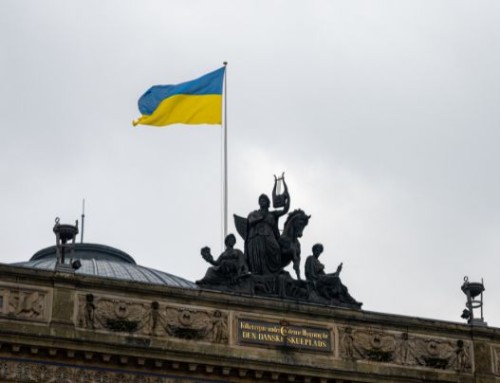
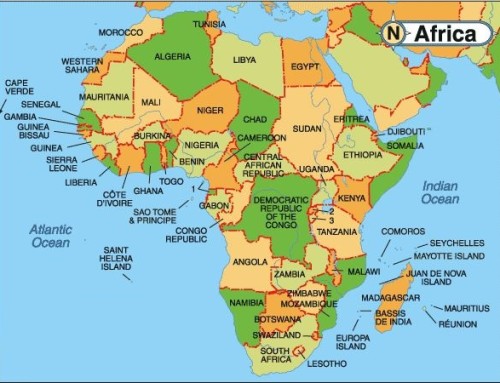
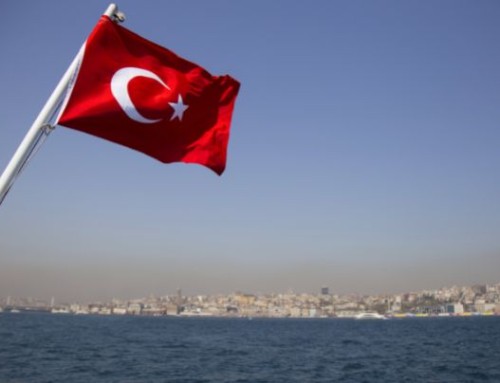
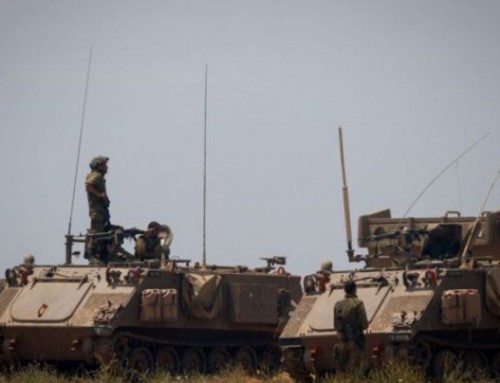
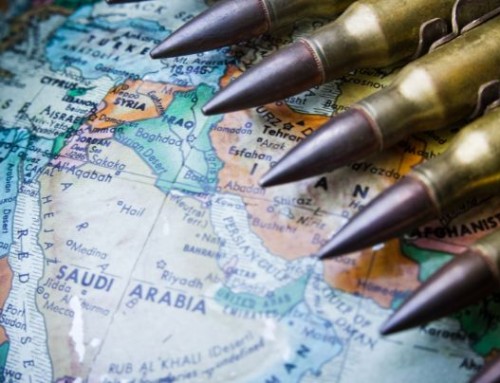
Comenteaza